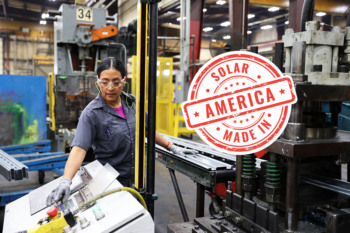Key Stats
Tackling the Climate Crisis With Solar
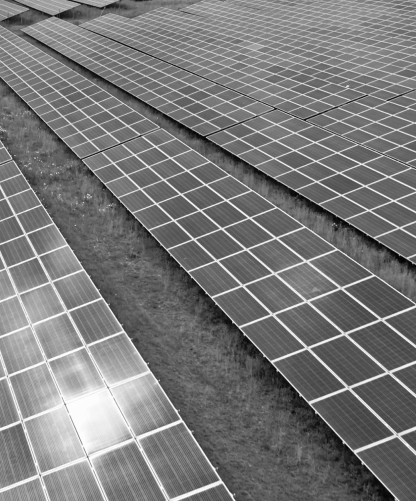

of solar manufacturing production by 2030
research
U.S. Solar and Storage Manufacturing Whitepaper Series
The United States is undergoing a transformational buildout of domestic solar and storage manufacturing to secure the safety and reliability of the electric grid. SEIA's vision is to reach 100 gigawatts of annual renewable energy manufacturing production capacity by the end of the Solar+ Decade, including 50 GW of solar manufacturing production capacity. The U.S. Manufacturing Whitepaper Series is a collection of reports that provide a blueprint for the U.S. to dramatically scale its solar and storage manufacturing efforts.
The U.S. solar and energy storage industry has faced a variety of supply chain and policy challenges in recent years, some of which significantly reduced deployment.
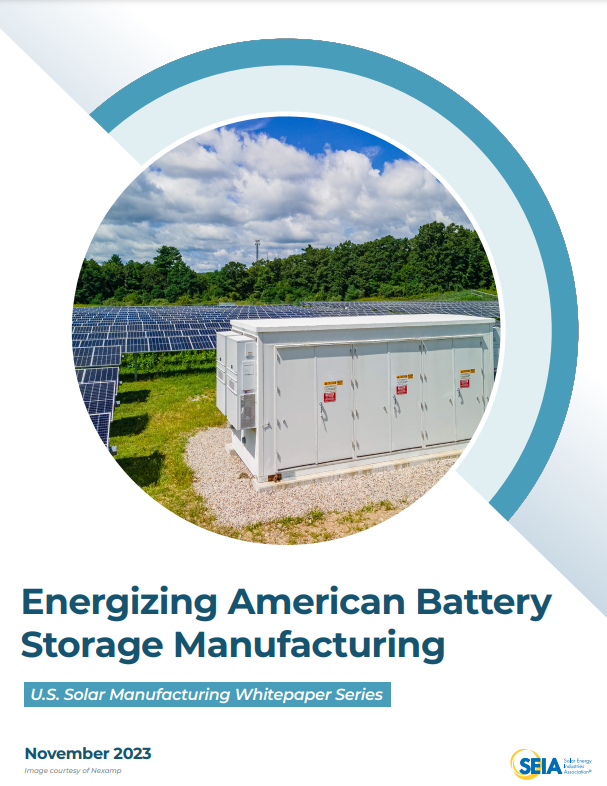
In this roadmap, you will read how policy, supply chain factors, international trade, economic growth and environmental and climate concerns can drive a revitalization of an American solar supply chain.
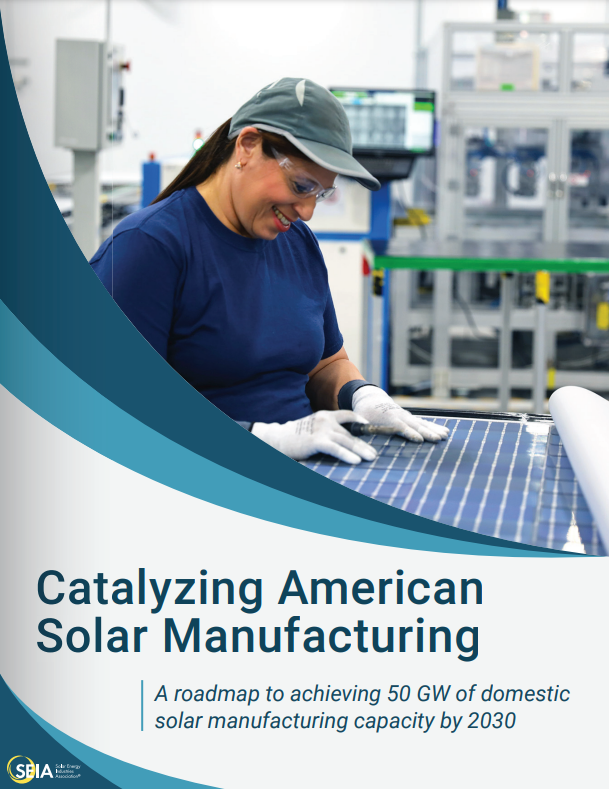
The United States is undergoing a transformational buildout of domestic solar and storage manufacturing. Like other industries, the U.S. can and is breaking free from an overreliance on imports while building a resilient and equitable U.S. solar and storage manufacturing base.
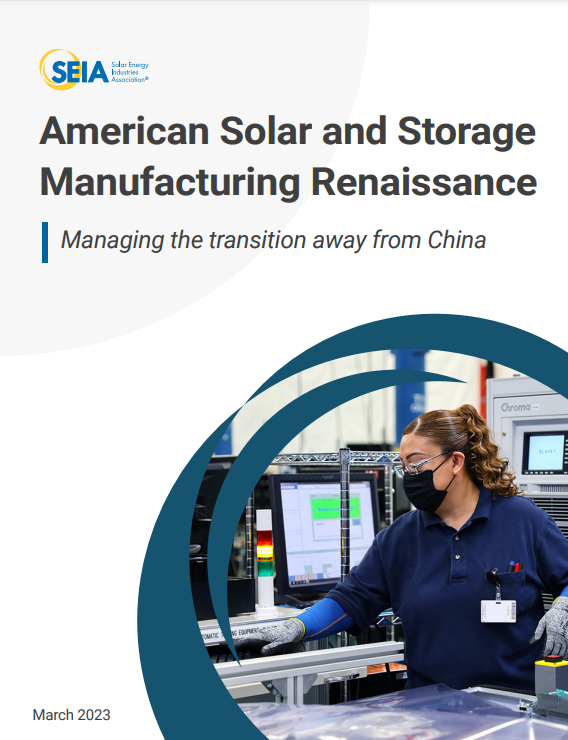
Building a Robust Solar and Storage Manufacturing Future
SEIA’s 100 GW target is designed to increase the U.S.’s ability to supply not only domestic solar energy projects but also export markets. The target also recognizes the benefits of an integrated global supply chain and an important role for imports. It is not intended to isolate U.S. renewable energy industries from the rest of the world.
So how do we get there? It will require maintaining, altering, and supplementing long-term federal investments, and a suite of policy options designed to: (i) incentivize investments in manufacturing capacity; (ii) support ongoing factory production; and (iii) provide demand certainty. All three investments are essential.
We must also recognize that change will not happen overnight and that imports will continue to be necessary to meet our climate change goals.
SEIA’s recommended suite of federal investments includes:
- Increasing access to low-cost capital, e.g., long-term, low-interest loans (capacity);
- Maintaining and evolving incentives for investments in facilities and equipment, e.g., manufacturing tax credit (capacity);
- Maintaining and evolving tax credit incentives for domestic production, e.g., linked to factory output (production);
- Federal purchases of domestically produced equipment (demand); and
- Maintaining the investment tax credit to provide demand certainty (demand).
SEIA’s target of 50 GW of annual solar energy manufacturing capacity by 2030 is not about picking winners or losers or favoring domestic products over imports. Rather, it is a recognition that a strong renewable energy manufacturing base is good for America’s national security and economic well-being.
The Solar and Storage Supply Chain Dashboard
SEIA maintains a U.S. manufacturing database to track growing solar and storage investments. The dashboard provides the latest data on manufacturing investment and jobs. It also shows where U.S solar and storage manufacturing is being built. Installers and manufacturers alike can use this data to help identify domestic suppliers of the goods and materials they need. Likewise, suppliers can use this data to identify prospective upstream customers for their products, materials and services.
Read More ->
